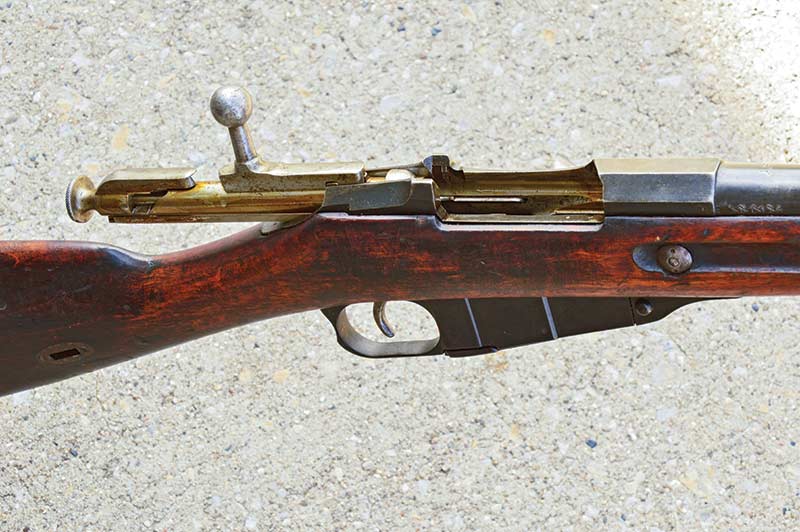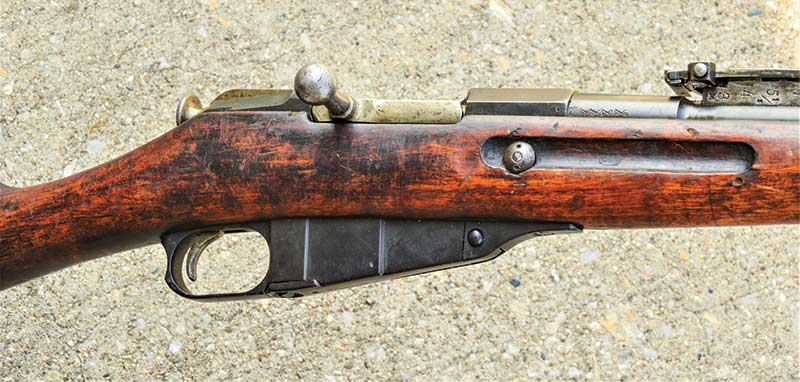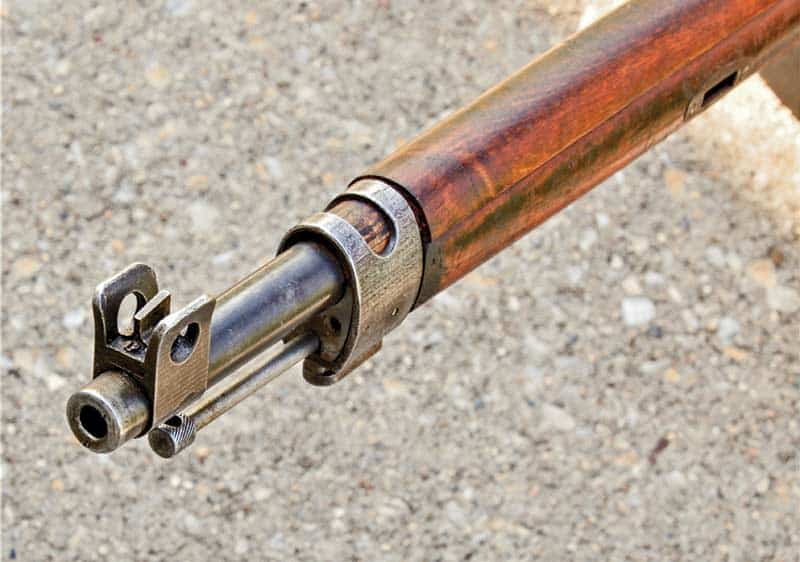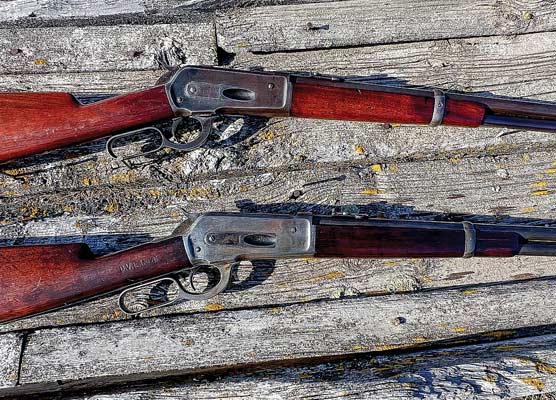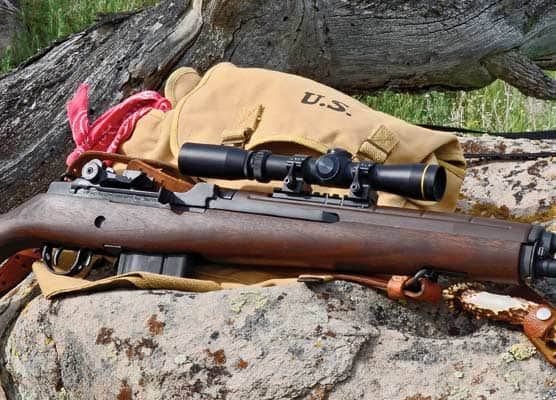The Finnish M28 Rifle
Marksman’s Budget Battle Rifle
The Russians, under the leadership of a power-mad dictator, attacked a vastly smaller and weaker neighbor with what looked like overwhelming military force. They expected a quick and easy victory. In fact, they didn’t really expect much resistance at all.
However, instead of an easy conquest, they were met with tenacious and skillful resistance, suffered tremendous losses in men and materiel, completely failed to reach their objectives and revealed their military leadership was grievously handicapped by widespread incompetence. After two months of disastrous, internationally embarrassing, failures on the battlefield, they resorted to heavy bombardment to pound their adversaries into submission.
History Repeats
Though this story sounds like a description of the recent invasion of Ukraine, it is actually the story of the first two months of what the Finnish call “The Winter War,” fought from November 30, 1939 to March 10, 1940. In the 101 days the Winter War lasted, the invading Soviet forces inflicted perhaps as many as 69,000 casualties on the Finns, but at a staggering cost — recent estimates put the number of Soviet dead alone at over 138,000. I think the denouement of the conflict, which is beyond the scope of this story, deserves careful re-examination in light of current events in Ukraine lest anyone be fooled into expecting unrealistic outcomes.
Now we understand the exceptionally high level of “badassery” displayed by Finnish soldiery in the Winter War, it’s time to look at their weapons. The three most common rifles on the battlefield were the M27, M28 and M28/30. The Finnish Army developed and used the M27 while the Civil Guard developed and used the M28 and M28/30.
The Finnish rifles have an obvious resemblance to the Russian Mosin Nagant. This is because every one of them began its life as a Russian Mosin Nagant, destined for a humble peasant conscript in the Tsar’s army. How the Finns turned Russian materiel against them adds another layer of irony to the Winter War and is a tale worth telling.
Making A Country
To begin at the beginning, Finland was once a part of the Imperial Russian Empire, a situation not to their liking at the start of the 20th Century. The events of World War I provided the opportunity for the Finns to successfully rebel against the Russian Tsar and achieve their independence as a sovereign nation in 1917.
As a result of expelling a bunch for Russian soldiers from their soil, they found themselves in possession of about 190,000 Russian-made M91 Mosin Nagant rifles and carbines, along with ammunition for same. At the time, a cache of arms this size was enough for a small army, which is exactly what the newly independent Finns needed. Being realists, the Finns concluded adopting the M91 for their military forces was really their most practical and economical option. Those secondhand M91s came in handy because they spent the next year fighting a bloody civil war against Finnish communist revolutionaries, thoroughly defeating them in 1918.
However, their hulking neighbor Russia, and then the communist Soviet Union that replaced it, was always viewed as their most immediate and dangerous external enemy. With their civil war concluded, the Finns took steps to enlarge their military capabilities to the extent their limited resources allowed.
In addition to creating and then expanding a new Finnish national army, the voluntary Civil Guard units that fought the civil war were greatly expanded to create a nationwide military training organization. These civil guard units were similar to our current national guard in respect to their military training and capabilities, but they were largely privately funded, armed and equipped.
Unlike a militia or state regiment in the American military tradition, these Finnish Civil Guard units answered to a national military chain of command. It is significant to understand the Civil Guard troops hugely outnumbered the regular military forces before 1940. As Finland’s troop strength grew, they needed more weapons. Fortunately, they were able to purchase around 173,000 more surplus M91 rifles in Europe.
Recycling, Military-Style
The Finns used their M91s until they wore out and then improved them with each subsequent rebuild. The improvements were accelerated because of the dual organization of Finnish forces. Both the regular standing army and Civil Guard volunteers developed their own improvements, and had rifles rebuilt to their specifications, at the SAKO, Tikkakoski Oy, or VKT (Valtion Kivääritehdas) arsenals. Civil Guard rifles were stamped with the abbreviation “SY” or “SK.Y” on the top of the receiver ring. Army rifles had “SA” within a rounded corner rectangle stamped on the side of the receiver ring.
Often you will find both markings on the same receiver that indicates the rifle passed from the Civil Guard to army ownership. This dual track system of rifle procurement was inefficient and was finally abandoned in favor of cooperative development, which resulted in the M39 rifle. The M39 is arguably one of the best bolt action battle rifles of all time.
The Finnish rebuild programs focused on quality over quantity. They recycled the best of their Russian Mosin Nagant receivers — the hexagon ones were their favorite — bolts and magazines into better and better rifles. The evolution of Finnish Nagant variants is a huge topic. The rifles themselves often exhibit wildly mixed features reflecting their service life that makes the subject all the more confusing … and fascinating.
The Civil Guard M28 rifle I examined for this story, loaned to me from the inventory of Centerfire Systems (CenterfireSystems.com), is a good example of how far they had taken the archaic M91 by 1927. One of the first things they did was to install new heavier and more rigid barrels for improved accuracy. To reduce weight and get the M91 down to a handier, more practical length, they opted for a 27″ barrel.
Since they were changing barrels anyway, the Finns reworked the Russian 7.62x54R cartridge to optimize accuracy. The Finnish 7.62x53R has a slightly shorter case length and a slightly smaller bullet than the Russian cartridge. You would not want to shoot the Russian cartridge in a rifle chambered for the Finnish round because of the danger of creating a serious spike in chamber pressure.
Ammo Change
In the late1930s, the Finns concluded they’d probably have to make use of captured ammunition in a future war with the Soviets. So they adopted a new cartridge for the M39 rifle with chamber dimensions allowing the use of 7.62x54R also. They recut the chambers of most of the earlier model rifles chambered for their old 7.62x53R cartridge and stamped “D” on the receiver ring indicating they were safe to shoot with the new Finnish D166 7.62x53R cartridge and the standard Russian 7.62x54R cartridge. This M28 doesn’t have a “D” stamp, making it even more of a rarity than it usually is.
On the M28, the original M91 stocks were cut down and also upgraded to improve accuracy by free-floating the barrel. The barrel channel was enlarged so there was no metal to wood contact except at the receiver. They made new barrel bands to slip over the handguard, barrel and fore end and secured it with a lateral pin or screw holding the stock and handguard together solidly around the barrel, but putting no stress on it. At the very front of the stock and handguard junction, they used a loose metal bushing — much like the Swiss did around the barrels of their M1911 Schmidt-Rubin rifles — to allow the barrel to resonate freely during firing.
On the M28, the Civil Guard also included a bayonet lug on the bottom of the front barrel band to accept the new, shorter and more versatile blade-style bayonet adopted by the army the year before.
Sighting In
The Finns upgraded the sights, replacing the old Russian barleycorn (inverted “V”) front sight with a wider, flat top, straight-sided blade better suited to long-range marksmanship. The new front sight base had integral protective ears. The Konovalov rear sight was salvaged from the M91 and improved. The formally soldered-on sight base was now dovetailed securely on the new barrel.
All Finnish rebuilds scrubbed the archaic Russian arshin range numbers from the right side of the sight bases and replaced them with their equivalent in meters, often adding a new 200 meters sight step as well. To improve the rear sight’s visibility, they cut the original one from the rear of the sight ladder and installed a wider, flat-faced and vertically oriented, rear sight notch with screws.
The Finns were continuously tinkering with the original M91 Mosin Nagant trigger too, and by the M28 had refined it to a crisp, 4- to 4.5-lb. break that was among the finest in any standard military service rifle. The Civil Guard still had improvements to make resulting in the M28/30 — a true competitive shooter’s rifle. However, as it stood, their M28 was a remarkably more-accurate rifle than the Soviet M91/30 it went up against. The Finns were a nation of marksmen, and by putting accurate rifles in the hands of their soldiers, they were able to exploit that advantage to the fullest on the battlefield.


